Interprocedural Analysis
过程间分析简介
本小节通过四个部分介绍过程间分析。
- Motivation
- 为什么 要引入过程间分析?
- Call Graph Construction (CHA)
- 介绍一个过程间分析 必要的数据结构Call Graph
- 当前有数种方法来构建Call Graph,本节介绍其中速度最快的一种(Class hierarchy analysis,简称CHA)
- Interprocedural Control-Flow Graph
- 之前的章节关注CFG,引入过程间分析后,我们向CFG中添加相应的元素,得到过程间的控制流图(ICFG)
- 讨论由于添加了新元素而需要增加的操作
- Interprocedural Data-Flow Analysis
- 通过一个例子(也就是实验一中做的常量传播分析)来总结过程间分析
Motivation
注意区别 interprocedural 和 intraprocedural,过程间和过程内分析
如何处理 method call:做最保守的假设,即为函数调用返回NAC,而这种情况会丢失精度,引入过程间分析能够提高精度
1 | // 示例代码 |
| 分析方法 | 处理逻辑 | x的取值分析结果 |
|---|---|---|
| 过程内分析 | 保守假设:所有外部方法返回NAC(Not A Constant) | NAC |
| 过程间分析 | 通过调用图追踪foo()方法的具体实现,获取精确返回值 | 常量10 |
Call Graph Construction (CHA)
Definition of Call Graph: A representation of calling relationships in the program. A call graph is a set of call edges from call-sites to their target methods(callees)
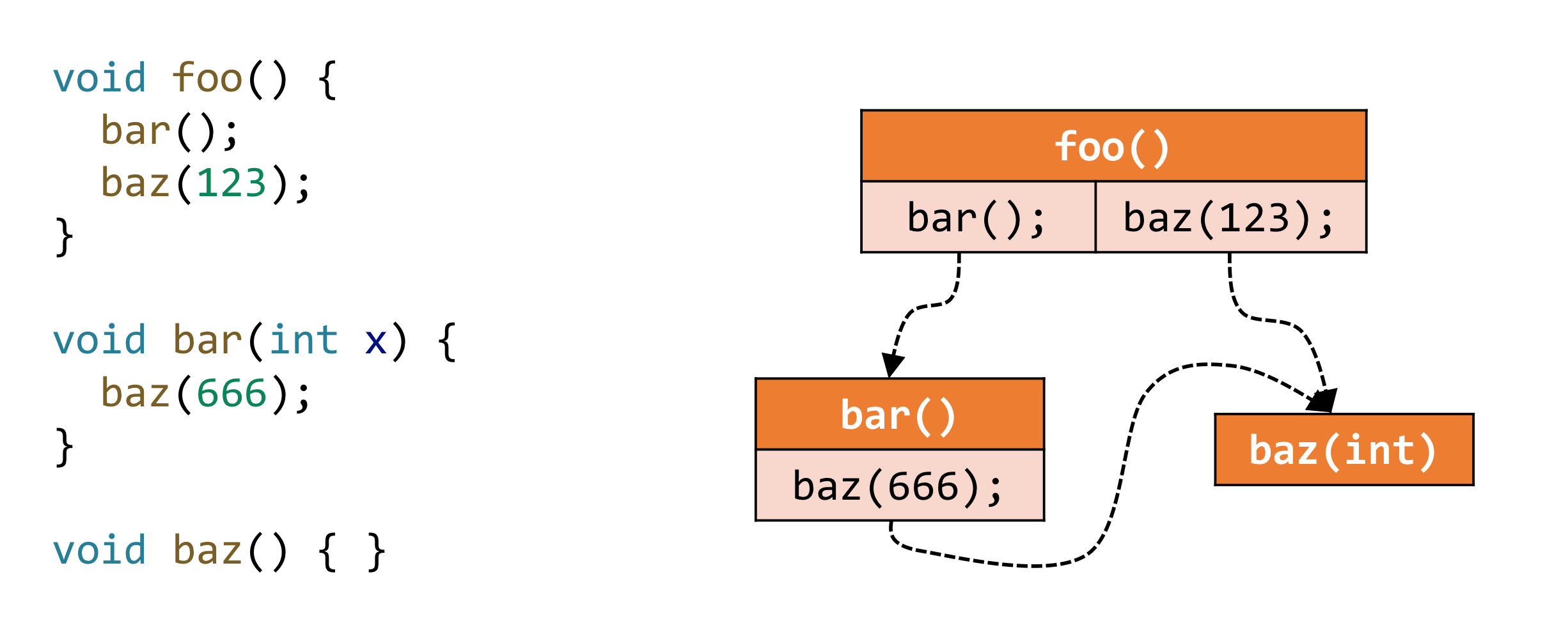
Call Graph Construction
call graph用在OOPLs,主要是java,这里说明最准确的(K-CFA)和最快速的(CHA)
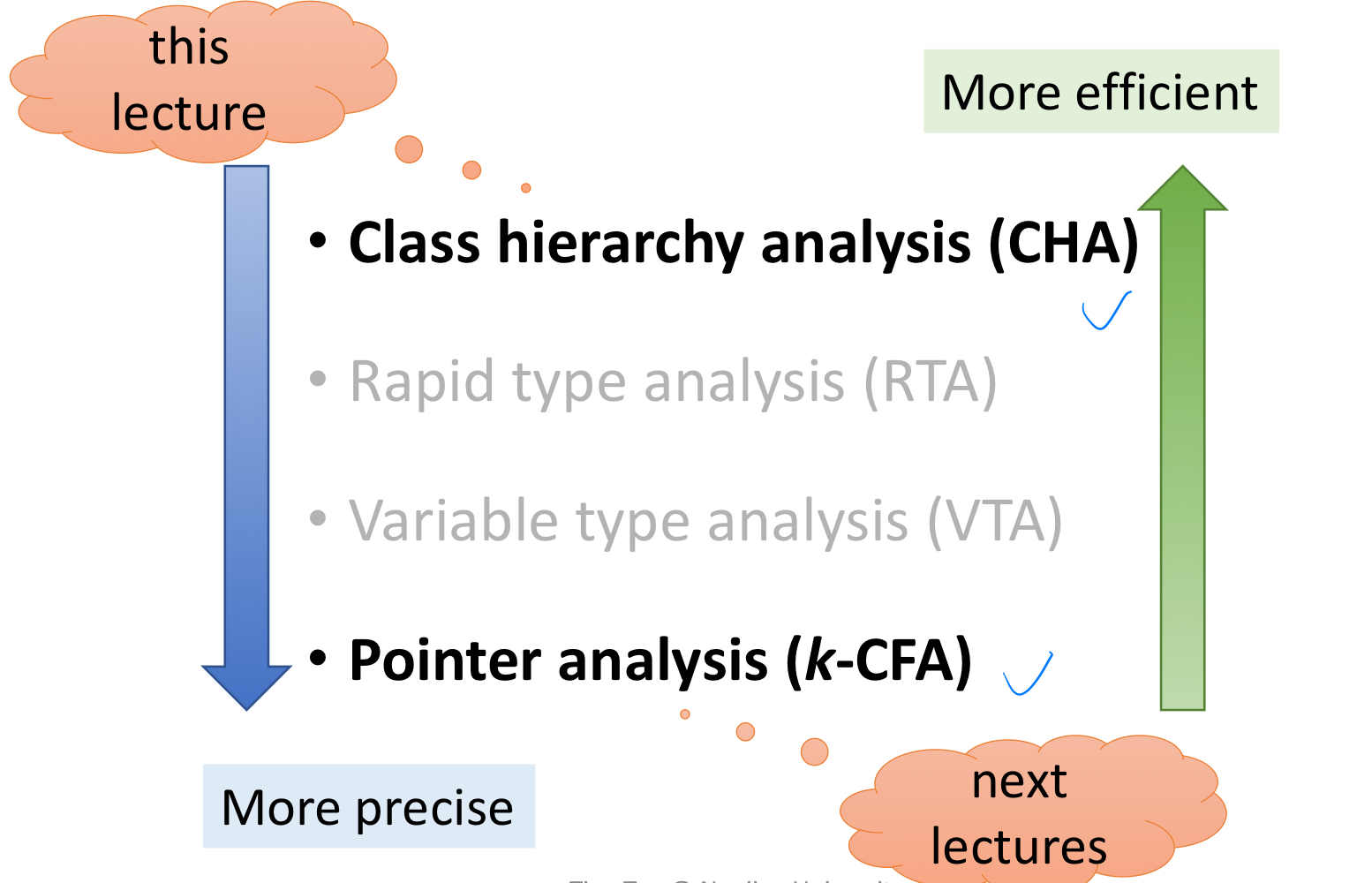
Call type in java
主要关注Java的调用关系图构建。在Java中call可分为三类(static call、special call、virtual call)
- Instruction:指Java的IR中的指令
- Receiver objects:方法调用对应的实例对象(static方法调用不需要对应实例)
- Target methods:表达IR指令到被调用目标方法的映射关系
- Num of target methods:call对应的可能被调用的目标方法的数量。Virtual call与动态绑定和多态实现有关,可以对应多个对象下的重写方法。所以Virtual call的可能对象可能超过1个
- Determinacy:指什么时候能够确定这个call的对应方法。Virtual call与多态有关,只能在运行时决定调用哪一个具体方法的实现。其他两种call都和多态机制不相关,编译时刻就可以确定
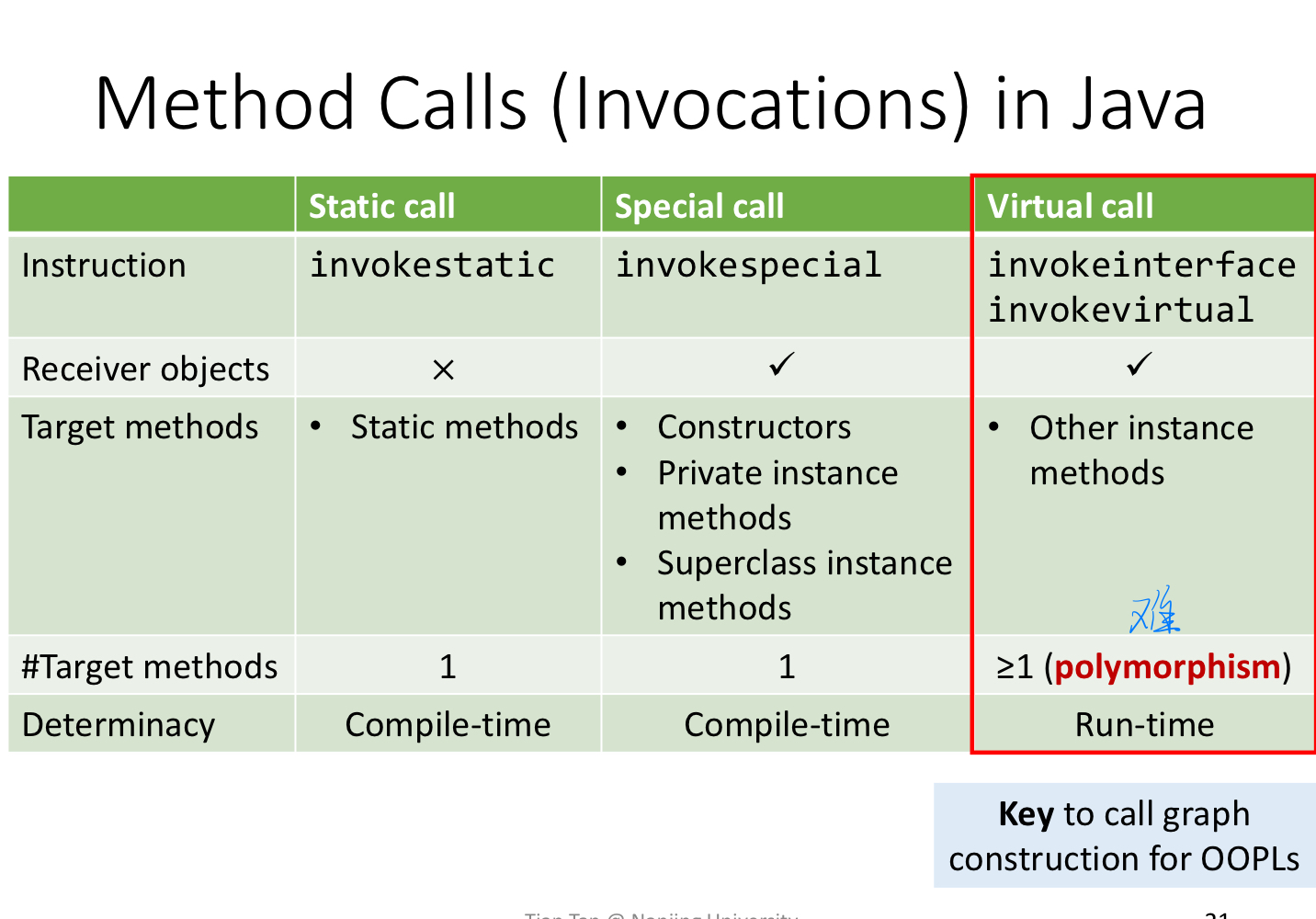
| 调用类型 | 字节码指令 | 接收对象 | 目标方法数 | 确定性 | 多态支持 | 典型场景 |
|---|---|---|---|---|---|---|
| Static Call | invokestatic |
无 | 1 | 编译时确定 | ❌ | Math.pow(), 工具类方法 |
| Special Call | invokespecial |
有 | 1 | 编译时确定 | ❌ | 构造函数、super.method() |
| Virtual Call | invokevirtual |
有 | ≥1 | 运行时确定 | ✔️ | 普通实例方法调用(非final) |
| Interface Call | invokeinterface |
有 | ≥1 | 运行时确定 | ✔️ | 接口方法调用(如List.add()) |
Virtual call and dispatch
Virtual call是几种调用中最为复杂的一种,在动态运行时,Virtual call基于两点决定调用哪个具体方法:
- Type of object
- Method signature
- Signature = class type + method name + descriptor
- Descriptor = return type + parameter types
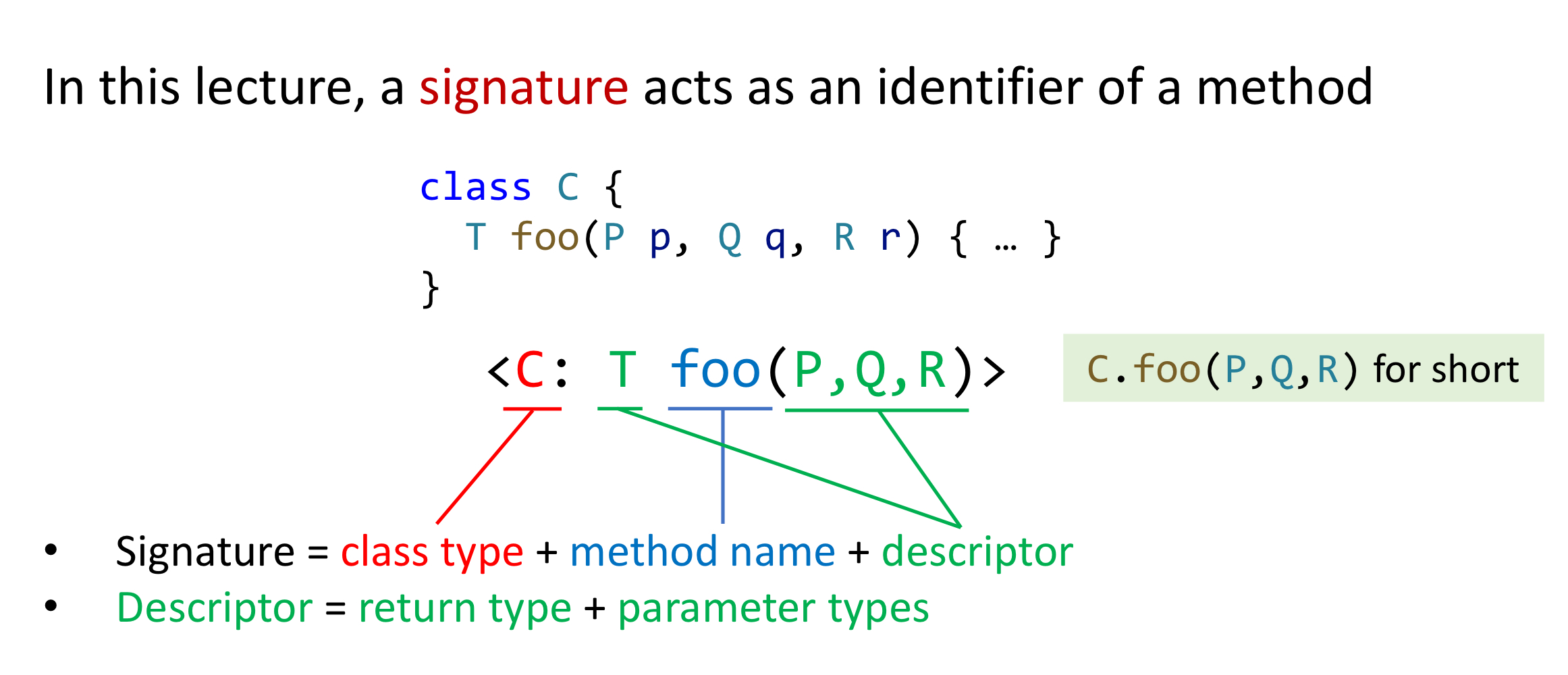
Java中Dispatch机制决定具体调用哪个方法:c是一个类的定义,m是一个方法。如果能在本类中找到name和descriptor一致的方法,则调用c的方法,否则到父类中寻找
We define function Dispatch(𝑐, 𝑚) to simulate the procedure of run-time method dispatch.
下面为Dispatch机制说明,并给出对应的例子说明
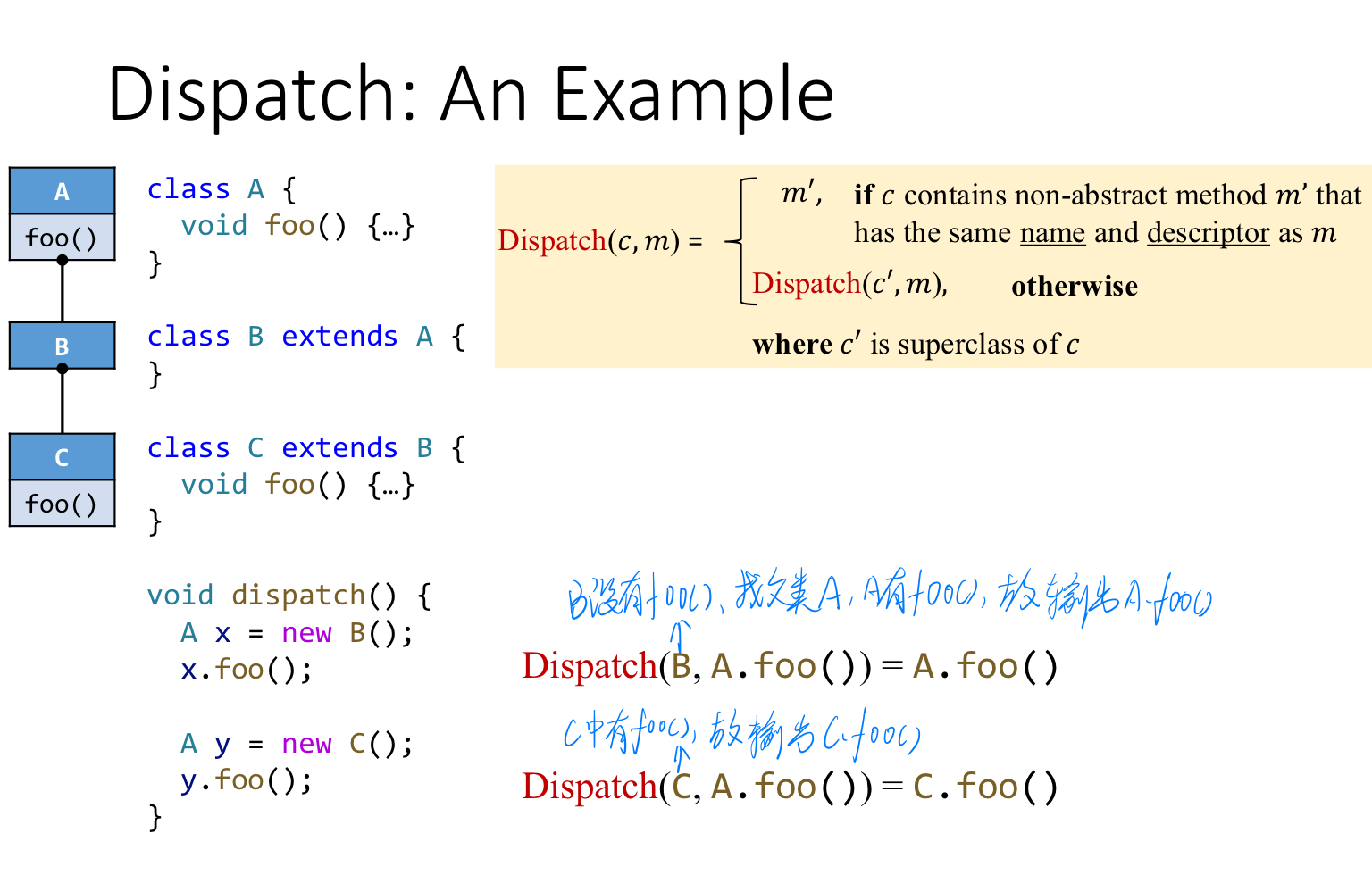
Class Hierarchy Analysis (CHA)
Require the class hierarchy information (inheritance structure) of the whole program
需要首先获得整个程序的类继承关系图
Resolve a virtual call based on the declared type of receiver variable of the call site
通过接收变量的声明类型来解析Virtual call,接收变量的例子:在a.foo()中,a就是接收变量
Assume the receiver variable a may point to objects of class A or all subclasses of A(Resolve target methods by looking up the class hierarchy of class A)
假设一个接收变量能够指向A或A的所有子类
Algorithm of Resolve
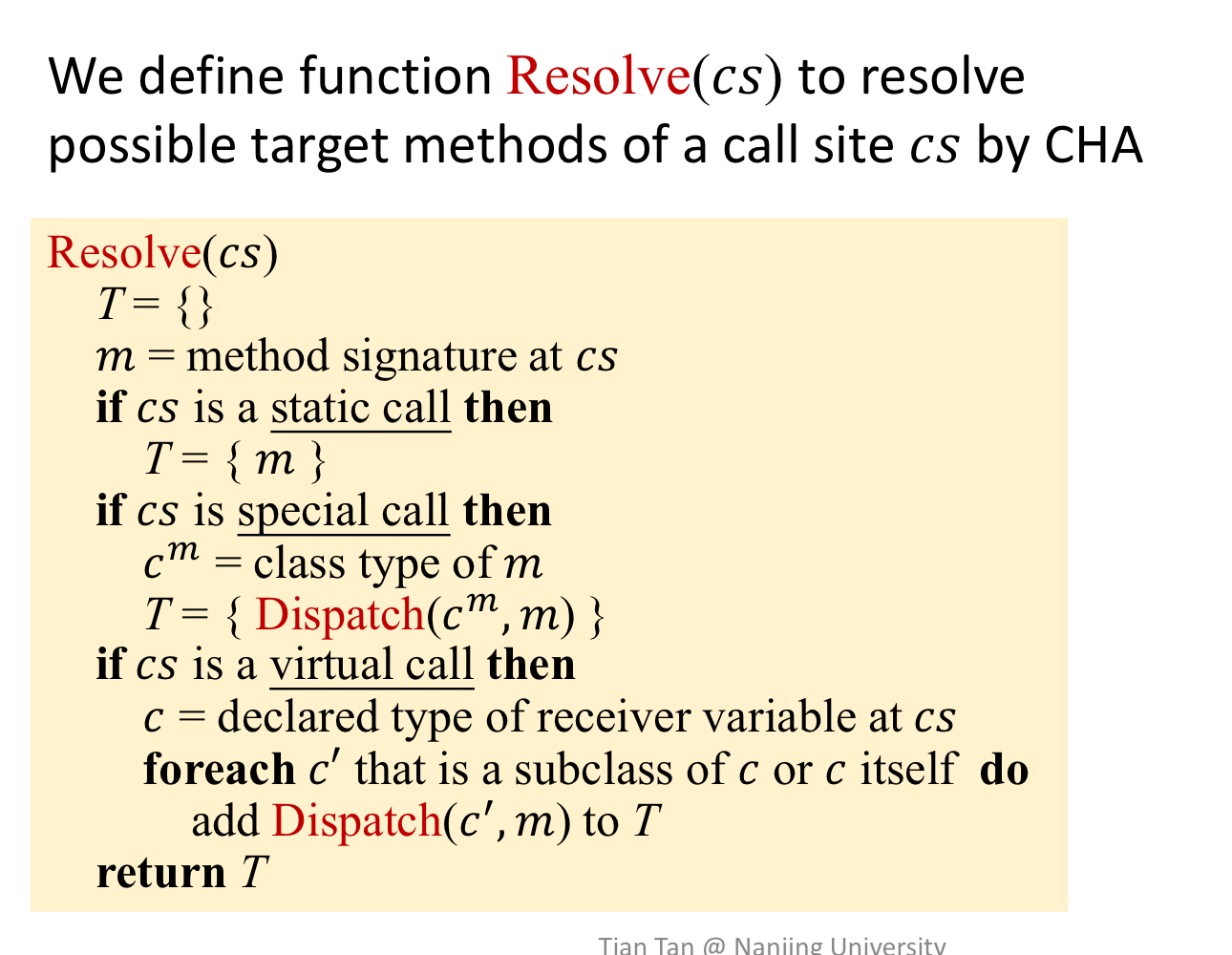
- call site(cs)就是调用语句,m(method)就是对应的函数签名
- T集合中保存找到的结果
- 三个if分支分别对应之前提到的Java中的三种call类型
- Static call(所有的静态方法调用)
- Special call(使用super关键字的调用,构造函数调用和Private instance method)
- Virtual call(其他所有调用)
| 调用类型 | 处理逻辑 |
|---|---|
| Static Call | 直接绑定到声明类的静态方法(唯一目标) |
| Special Call | 通过Dispatch解析父类或构造方法(如super()调用) |
| Virtual Call | 动态遍历接收对象所有子类,生成可能的目标方法集合 |
Static call
- 对于不了解OOP中静态方法可以参考这里。具体来说,静态方法调用前写的是类名,而非静态方法调用前写的是变量或指针名。静态方法调用不需要依赖类实例
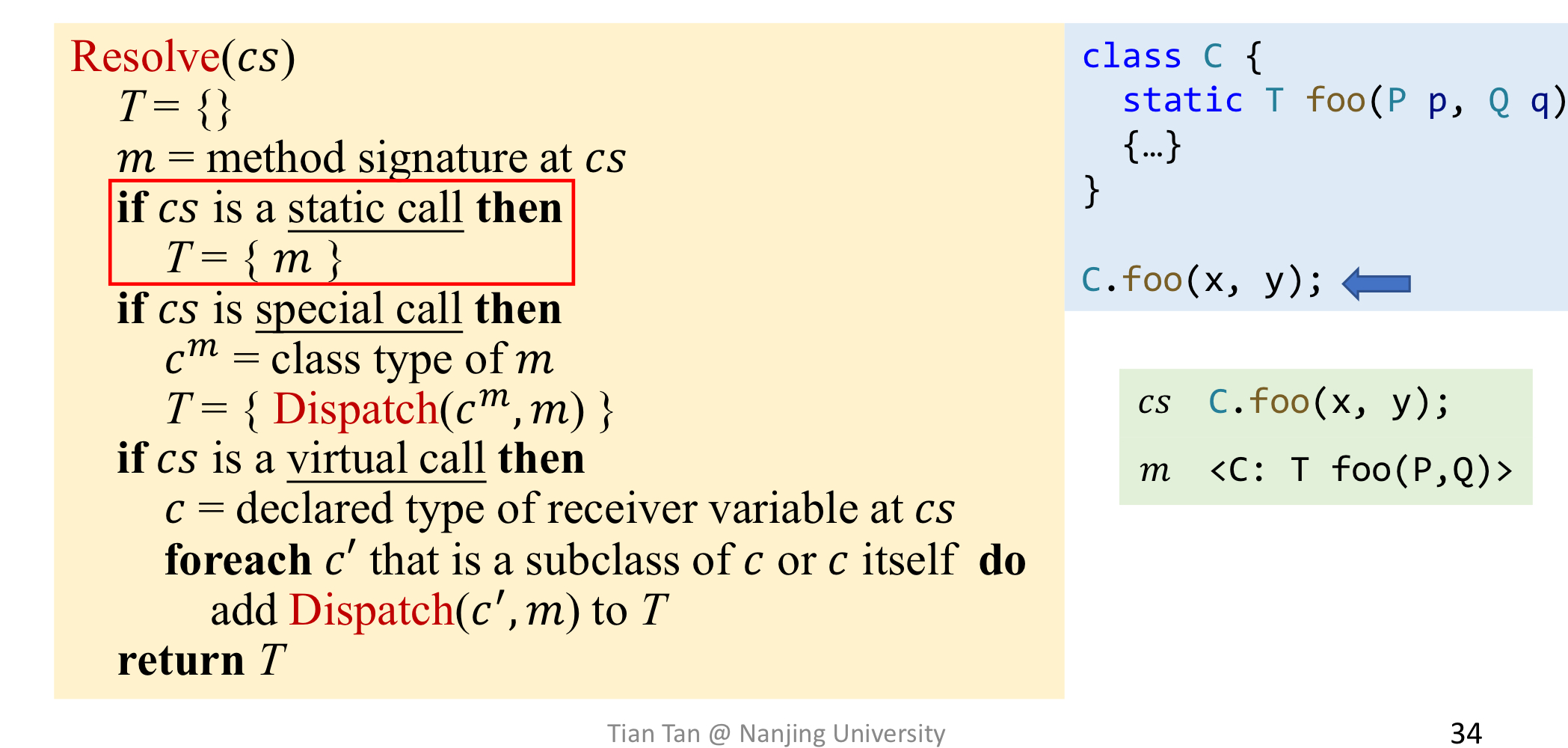
Special call
- Superclass instance method(super关键字)最为复杂,故优先考虑这种情况
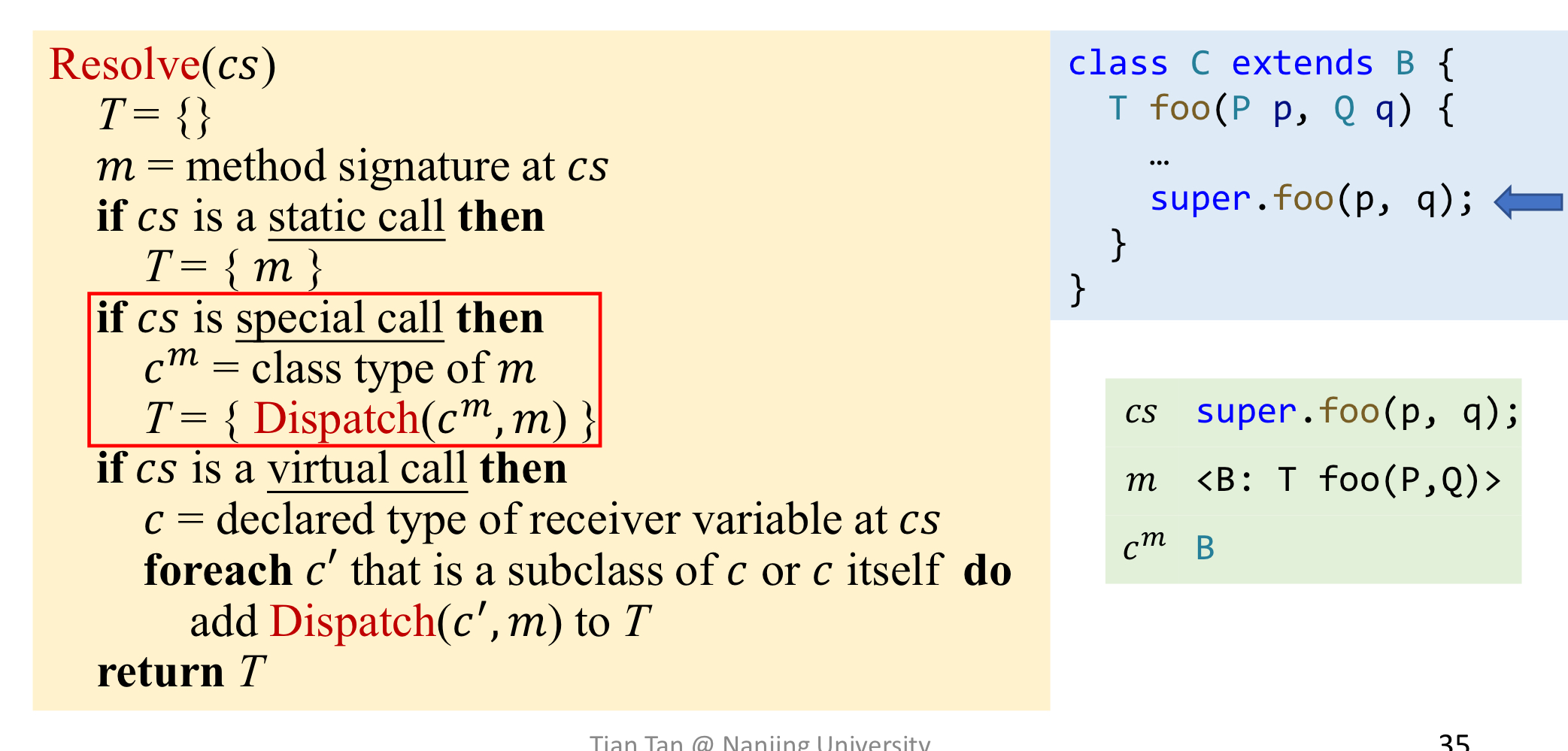
处理super调用需要使用Dispatch函数,在下图所示情况中没有Dispatch函数时无法正确解析C类的super.foo调用
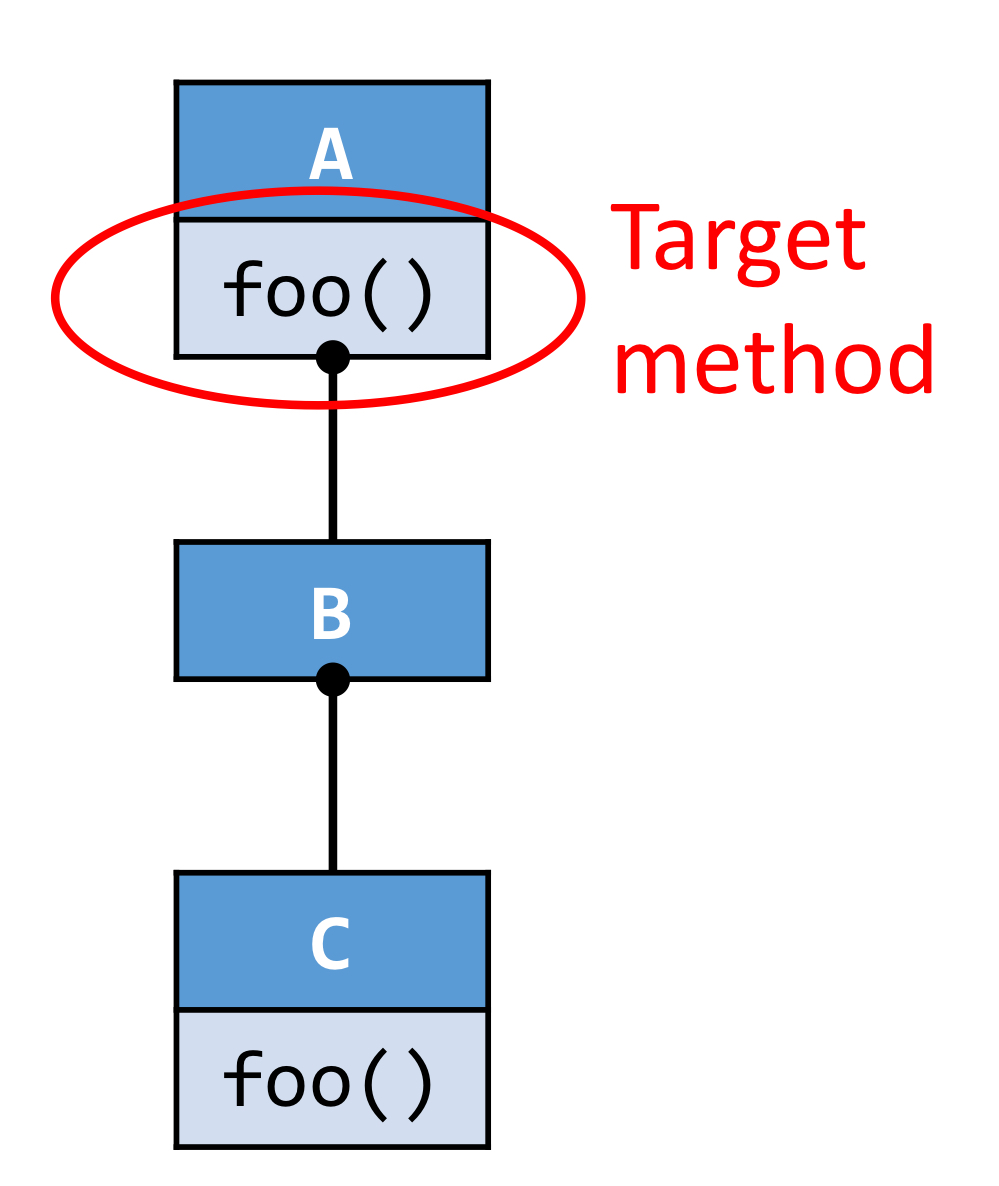
而Private instance method和Constructor(一定由类实现或有默认的构造函数)都会在本类的实现中给出,使用Dispatch函数能够将这三种情况都包含,简化代码
Virtual call
- receiver variable在例子中就是c
- 对receiver c和c的所有直接间接子类都作为call site调用Dispatch
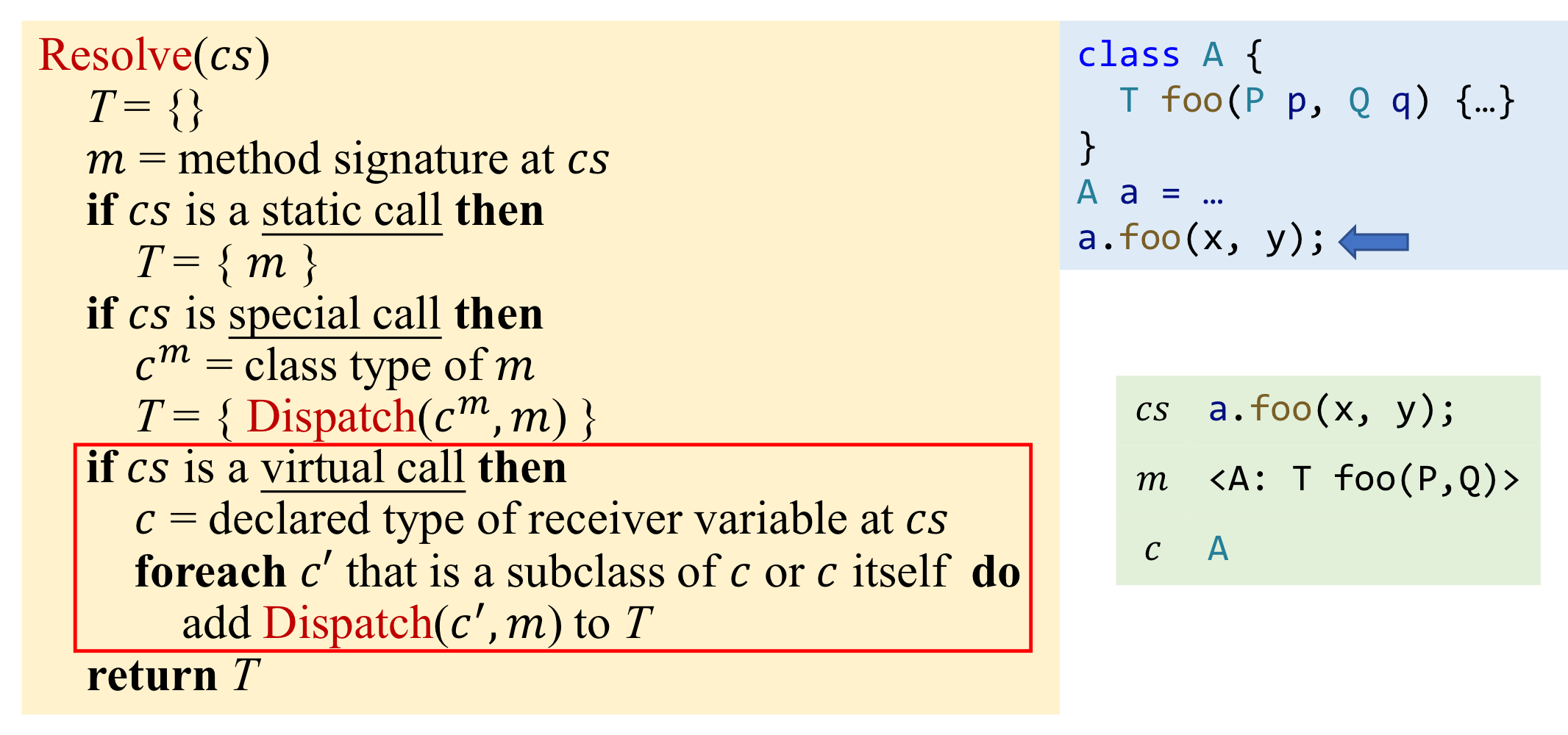
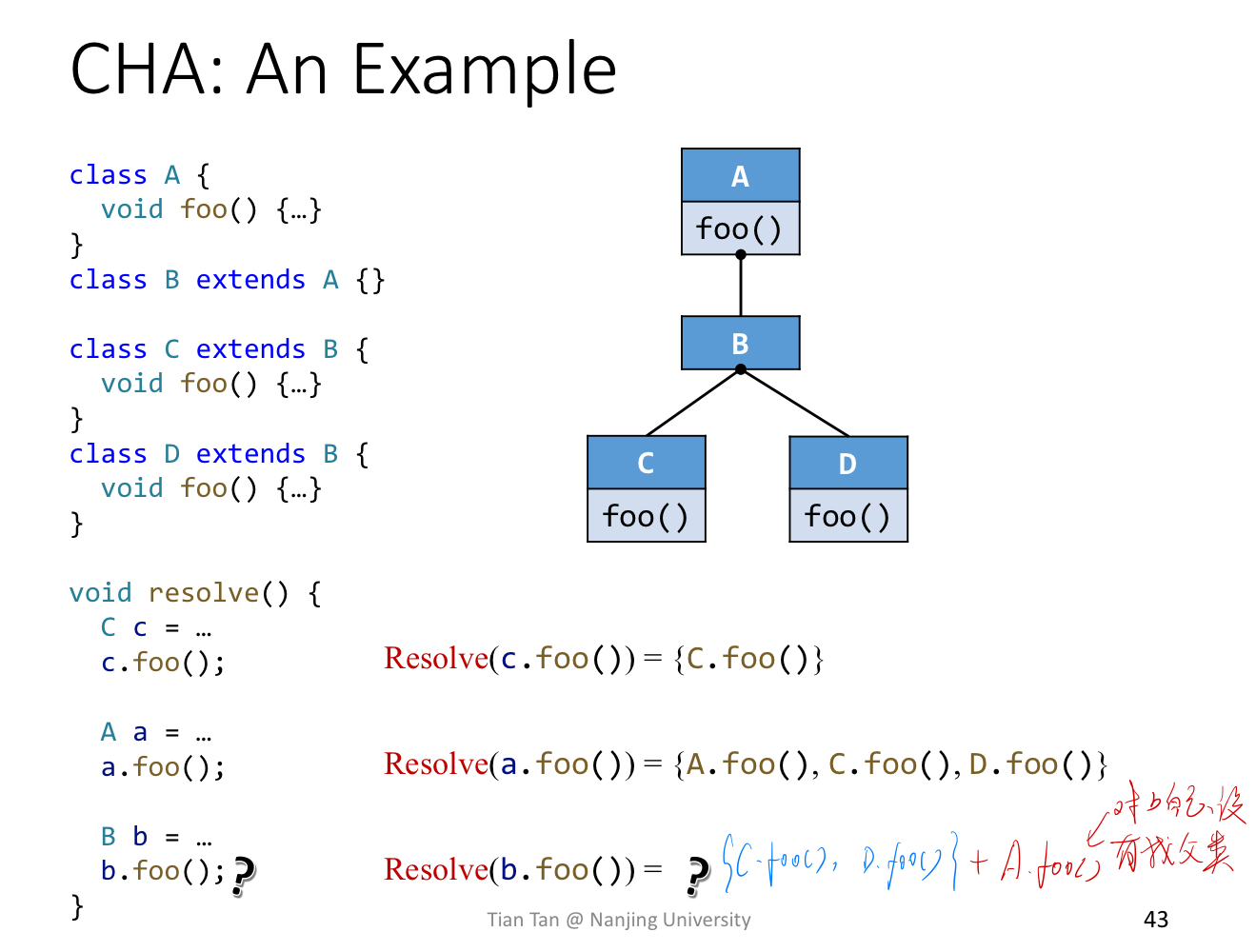
CHA的特征
- 只考虑类继承结构,所以很快
- 因为忽略了数据流和控制流的信息,所以不太准确
Call Graph Construction
- Build call graph for whole program via CHA
- 通过CHA构造整个程序的call graph
- Start from entry methods (focus on main method)
- 通常从main函数开始
- For each reachable method 𝑚, resolve target methods for each call site 𝑐𝑠 in 𝑚 via CHA (Resolve(𝑐𝑠))
- 递归地处理每个可达的方法
- Repeat until no new method is discovered
- 当不能拓展新的可达方法时停止
- 整个过程和计算理论中求闭包的过程很相似
Algorithm
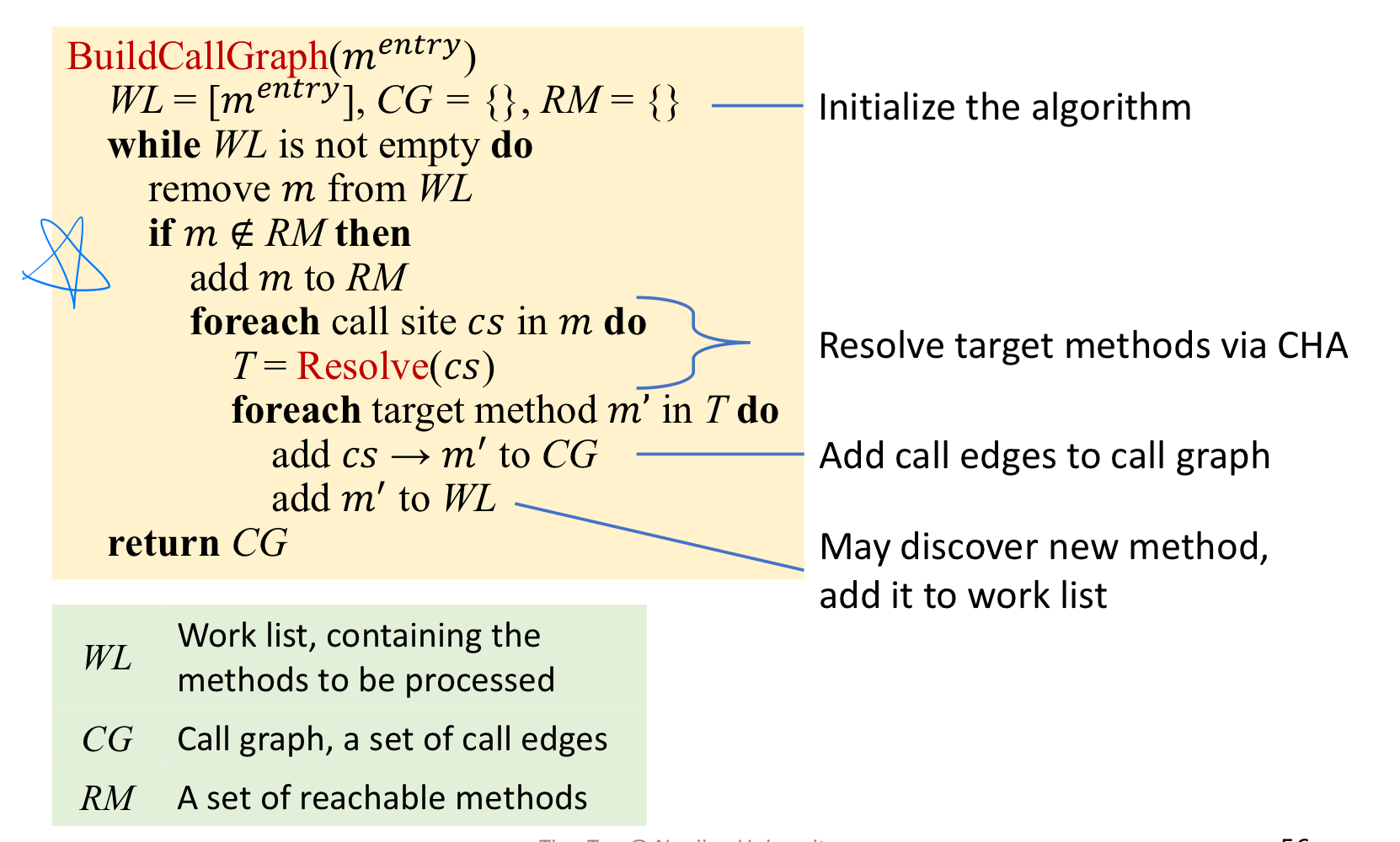
- Worklist记录需要处理的methods
- Call graph是需要构建的目标,是call edges的集合
- Reachable method (RM) 是已经处理过的目标,在Worklist中取新目标时,不需要再次处理已经在RM中的目标
1 | class Main { |
| 步骤 | 操作 | WL | RM | CG 新增边 |
|---|---|---|---|---|
| 初始化 | WL=[Main.main] |
[Main.main] | ∅ | ∅ |
| 第1轮 | 处理Main.main |
∅ | {Main.main} | Main.main → C.bar(静态调用) Main.main → B.foo(CHA解析结果) |
新增C.bar和B.foo到WL |
[C.bar, B.foo] | |||
| 第2轮 | 处理C.bar(无调用点) |
[B.foo] | {Main.main, C.bar} | 无 |
| 第3轮 | 处理B.foo(假设其无新调用点) |
∅ | {Main.main, C.bar, B.foo} | 无 |
Interprocedural Control-Flow Graph
ICFG = CFGs + call & return edges
ICFG可以通过CFG加上两种边构造得到
- Call edges: from call sites to the entry nodes of their callees
- Return edges: from return statements of the callees to the statements following their call sites (i.e., return sites)
Interprocedural Data-Flow Analysis
定义与比较

- Call edge transfer
- 从调用者向被调用者传递参数
- Return edge transfer
- 被调用者向调用者传递返回值
- Node transfer
- 大部分与过程内的常数传播分析一样,不过对于每一个函数调用,都要kill掉LHS(Left hand side)的变量
example
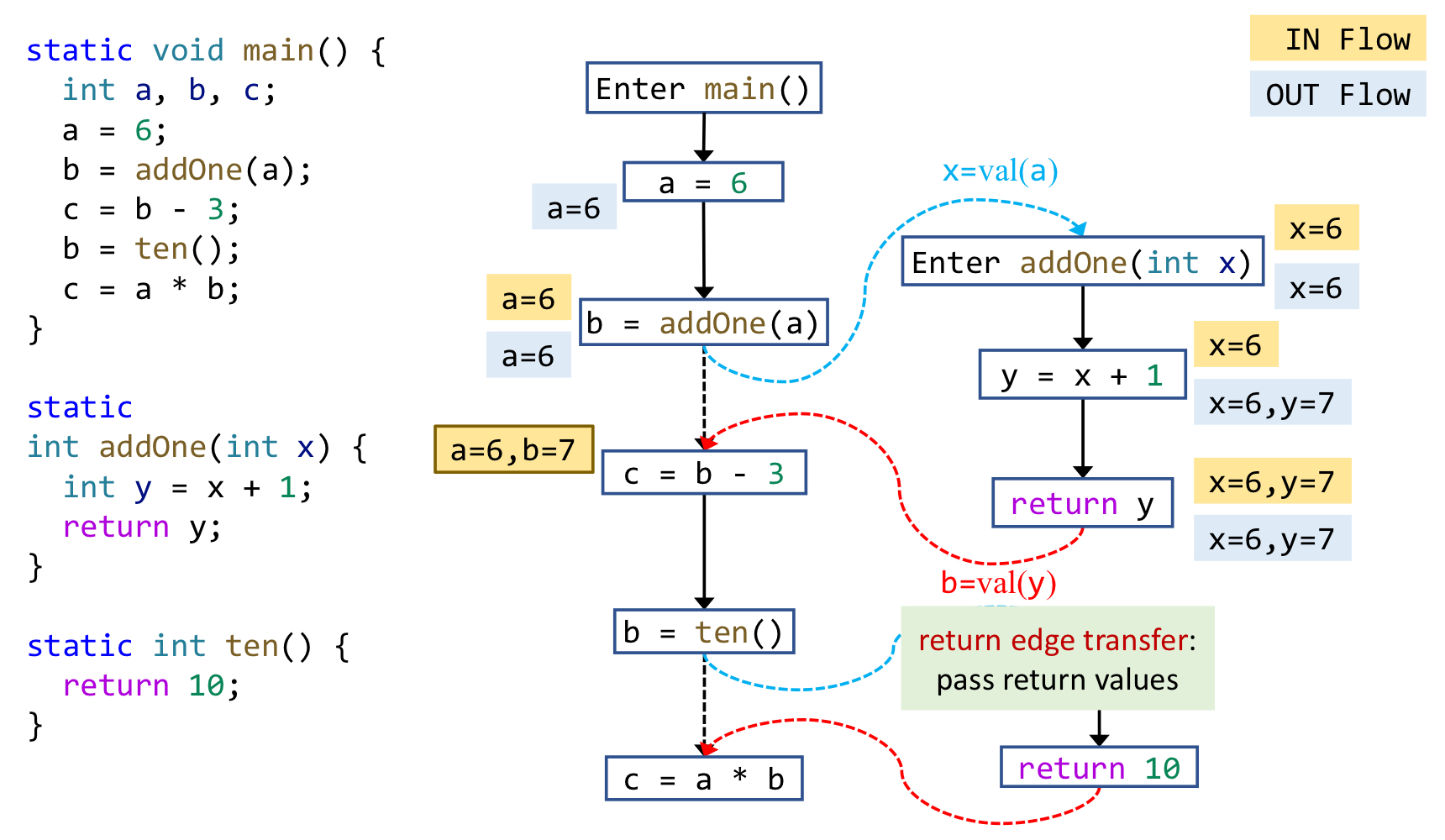
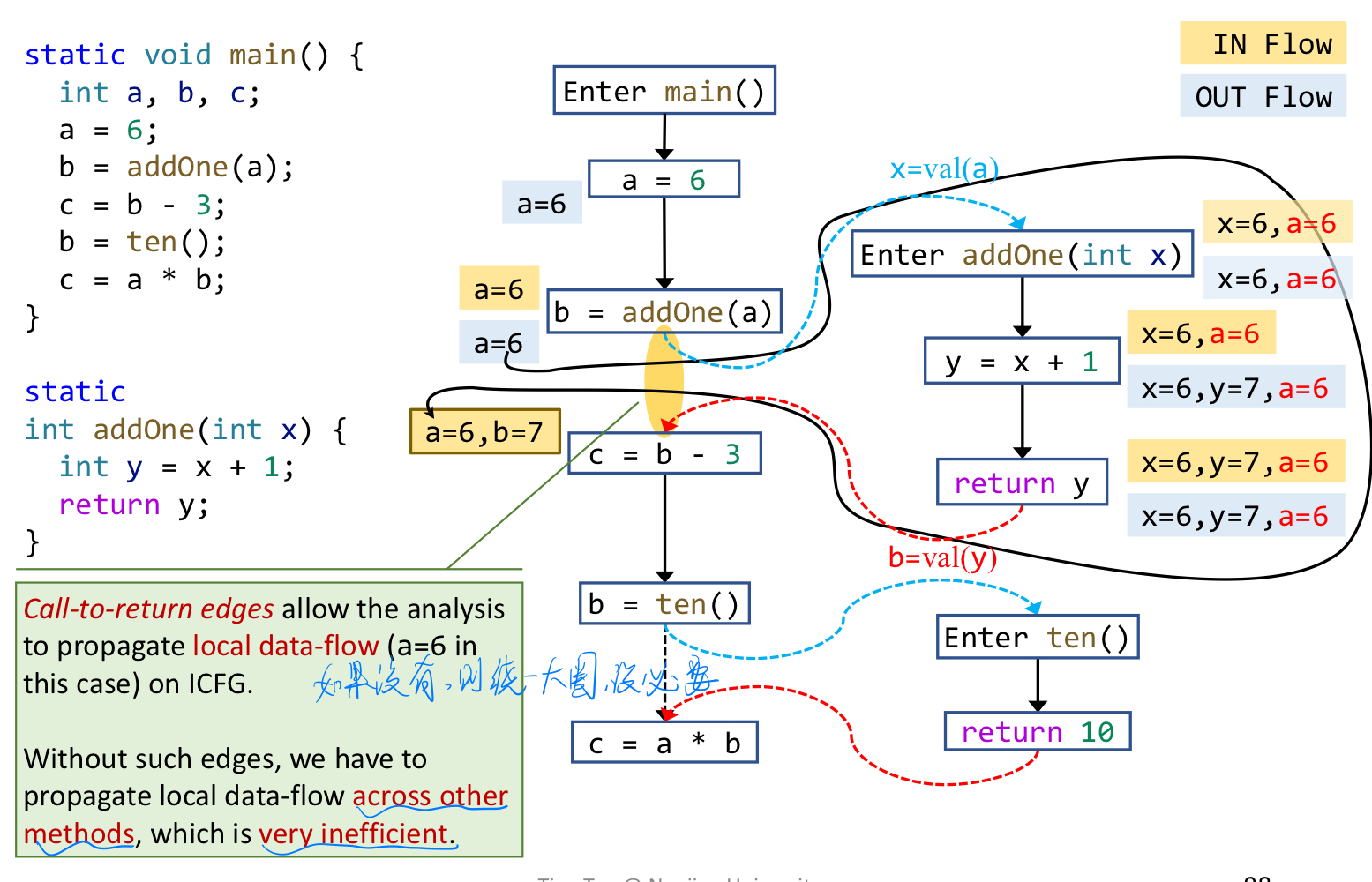
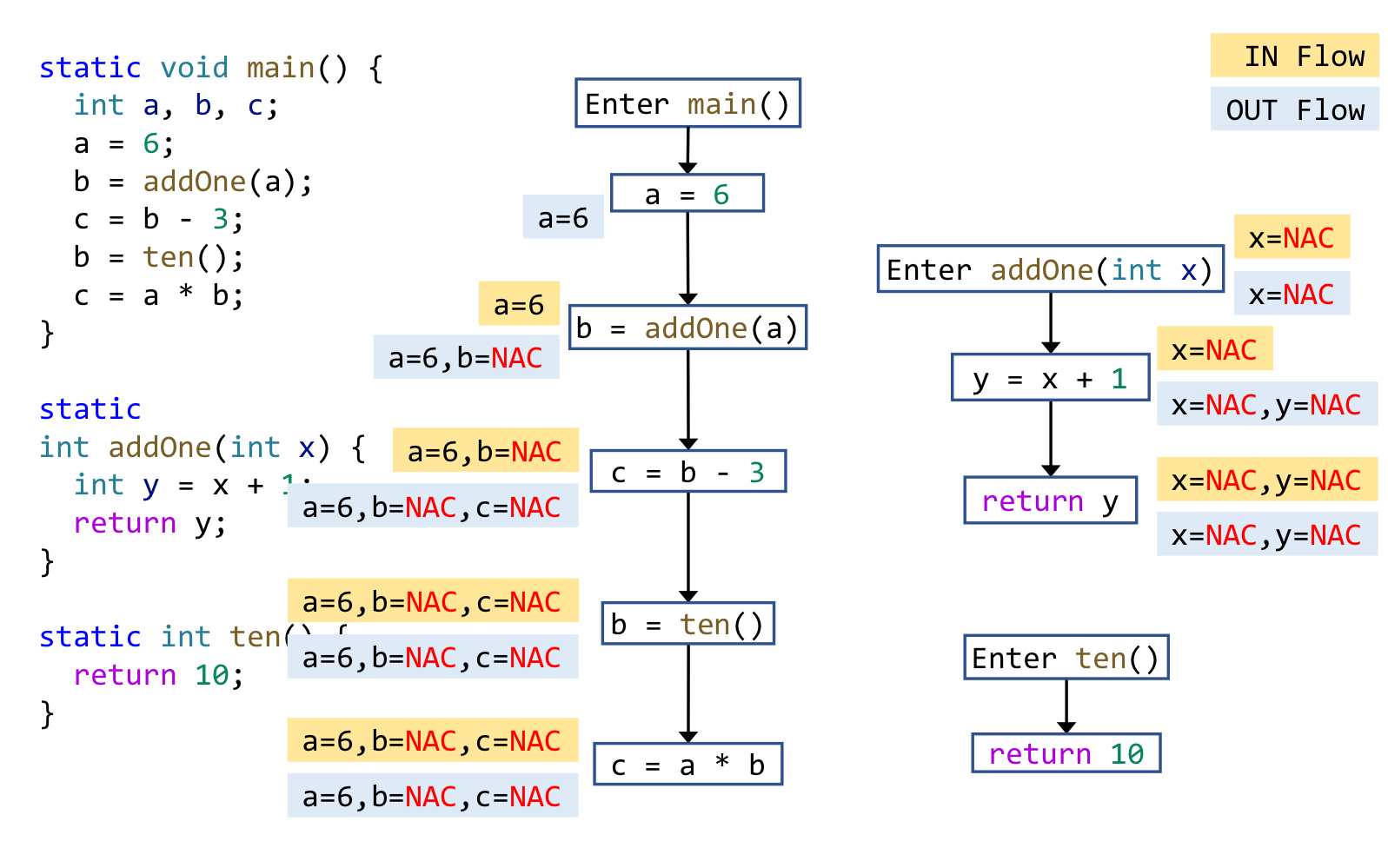
对比过程内分析和过程间分析,明显过程内分析精度低
| 分析维度 | 过程内分析 | 过程间分析 |
|---|---|---|
| 方法调用处理 | 假设所有调用返回NAC(Not A Constant) | 精确追踪参数传递与返回值 |
| 多态方法解析 | 无法处理虚方法调用 | 基于类层次分析(CHA)或指针分析解析目标方法 |
| 时间复杂度 | O(n)(n为单个方法代码量) | O(k·n)(k为跨方法调用次数,n为全局代码量) |
| 内存消耗 | 低(单方法内存模型) | 高(需存储全局ICFG和跨过程数据流) |
| 工具名称 | 分析策略 | 技术亮点 |
|---|---|---|
| Soot | 基于Spark框架的指针分析 | 支持多种上下文敏感策略 |
| WALA | 混合CHA与指针分析 | 增量式调用图构建 |
| CodeQL | 声明式数据流分析 | 跨语言过程间分析(Java/C++/Python) |